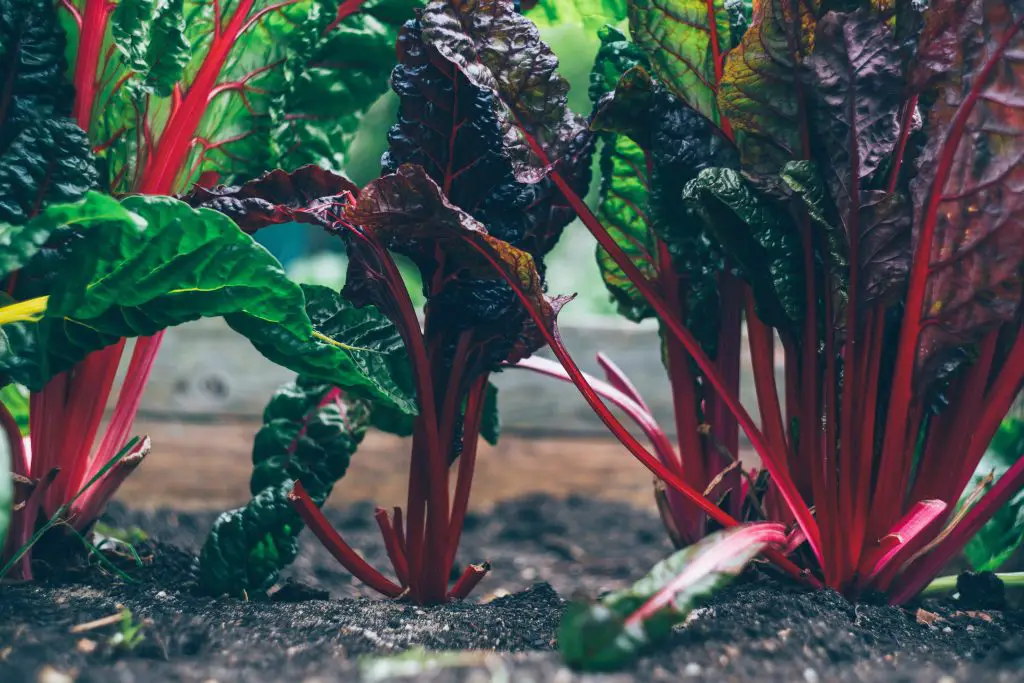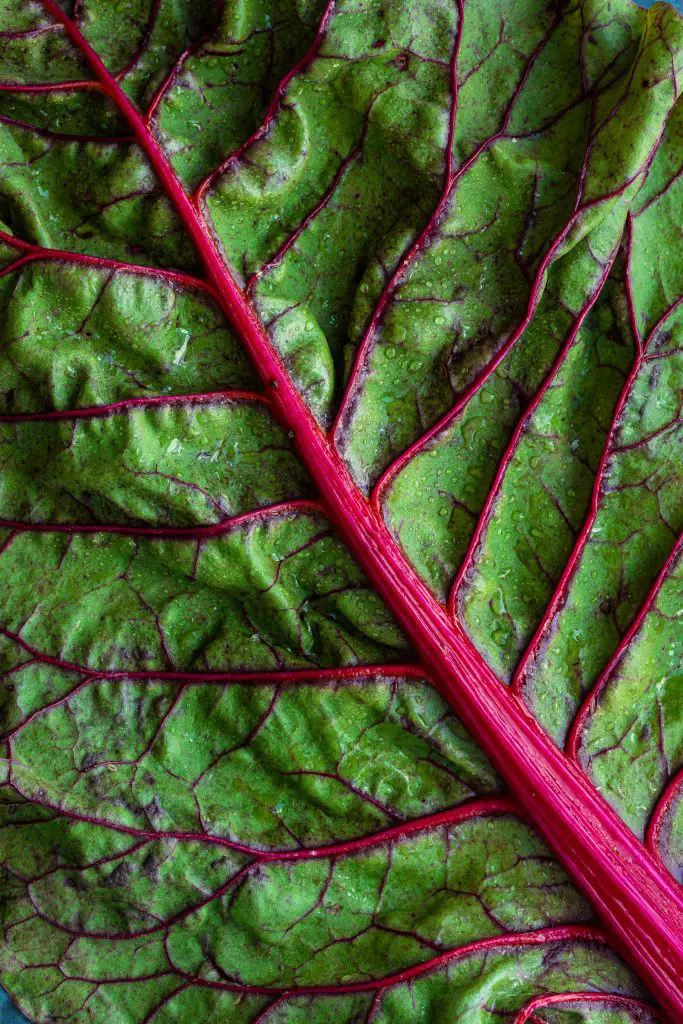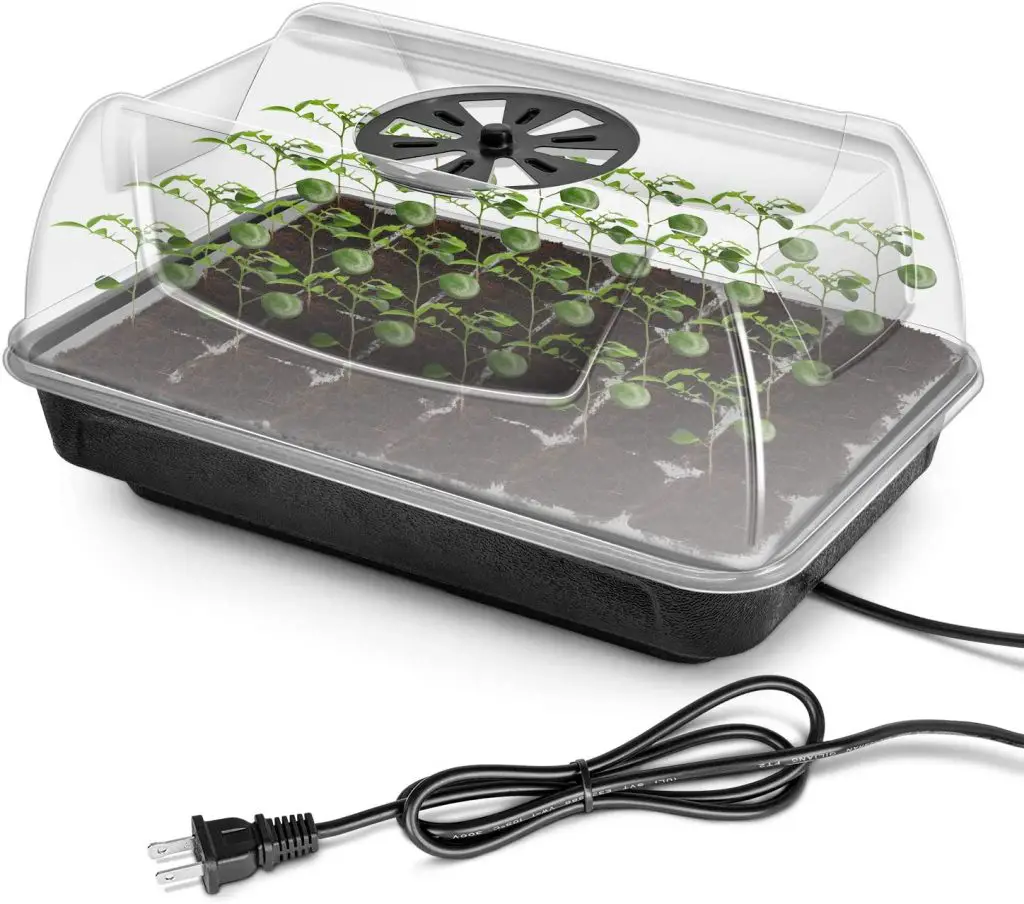Is Chard A Root Vegetable? Chard or Swiss Chard is a popular leafy green vegetable that is sold in the supermarkets and it is also one of the most prolific producers in the garden. It produces masses of leaves over an extended period of time. But does it also produce a root that is edible?
Chard is a member of the beet family which includes beetroot and sugarbeet, however, unlike these other plants chard does not produce an edible root. It is instead grown exclusively for its green leaves which are most commonly eaten cooked in a range of different dishes including stews and casseroles.
As mentioned above it is one of many leafy greens that are grown in the garden widely, however, of all of these type types of plants it is the most prolific by a long way. The number of leaves that it produces and the size mean that it is, by far, the best producer of these types of plants. It easily outstrips things like spinach and kale for sheer output.
The chard comes in a range of different colors which include white, red, yellow, orange, and sometimes green. The white varieties are also sometimes referred to as silverbeet rather than chard. To see the range of different varieties of available try visiting our vegetable database.

About Chard
Chard is a common vegetable that has several different names. It is referred to as silverbeet, perpetual spinach, beet spinach, sea kale, and leaf beet. It is a plant that originated in the southern parts of Europe and has been known for thousands of years and is first mentioned in literature in ancient Greece.
It is a cold-tolerant biennial plant that has been grown as both a vegetable crop and also an ornamental plant. It can typically produce leafy crops for up to 9 to 12 months of the year before the plant needs to be replaced. This is a distinct advantage over many other leafy greens such a spinach and lettuce which quickly run to seed within a matter of a few weeks.
However, the availability of the plant throughout the full 12 months is typically limited by the climate in which you live. Swiss chard is a relatively hardy plant that will tolerate frosts and will survive down to around 15F (-9C). However, it is generally advisable to provide at least some protection to the plant in sub-zero temperatures as that will improve the quality of the leaves.

How To Grow Swiss Chard From Seed
As mentioned above swiss chard is definitely one of those vegetables that you want to include in your garden because it is well worth the space you devote to it. If you are growing it for the first time and you want to get the absolute best out of it it is ideal to plant seeds in late winter indoors so that the seedlings are ready to go once all risk frost has passed.
While the plant is frost tolerance it does need warmer conditions in order to get going, so it is generally best to plant your seedlings in the garden only when the weather is starting to warm up a little bit.
To plant seed start by filling seed tray with good quality seed raising mix and then place two to three seeds per cell into a modular seed tray at a depth of approximately half an inch. The additional seeds in each modular tray will ensure that at least one plant will appear in each cell of the seed tray.
If you live in a relatively cold climate you may want to consider purchasing a heated seed propagation tray as this will help to get your seedlings off to a good start. The advantage of using a heated seed tray instead of just placing a normal one indoors is that the temperature control is much better and you will get a much more consistent heat for your seeds.

If you are considering purchasing one the product we would recommend is the ipower germination kit because it features a removable seed tray and humidity dome which are both important features that a highly beneficial.
The removable seed tray is important because that is the component within the unit that will deteriorate first, so being able to replace that part will extend the life of the unit substantially. The humidity dome is also an important feature as it ensures that a more consistent temperature can be maintained. To see the latest price on Amazon click on the link below.
Once the seedlings are planted they will typically take between 7 and 14 days to appear and will most likely require around 4 to 6 weeks in the seed tray before they can be transplanted out into the garden.
When it is time to plant the seedlings in the garden they can be placed in a sunny or shady area as this plant does not need to flower in order to produce a crop. Planting in a shady location will reduce the rate of growth, however, it is advantageous if you are planning to grow the plants through the summer season in regions that are relatively hot.
In terms of soil conditions, chard ideally prefers a rich moist, and free-draining soil with plenty of nutrients. Chard particularly benefits from having soil rich in nitrogen which can be achieved by adding additional compost or animal manures.
Harvesting Chard
Once the chard is planted in the ground it will take a little while to get going as it needs time to develop in size and shape. However, once this initial period is past your find that the chard will be a prolific producer that creates very large leaves in large numbers.
To ensure that you have an ongoing supply of the chard it is best to remove the outer leaves as they appear, leaving the inner ones to continue to grow rather than chopping down the entire plant. If you do this you’ll find that you have an ongoing supply throughout the season and into winter.
However, once the weather starts to warm up in the following spring the plant will typically want to set seed which usually takes until the middle to late spring to occur. At this point, the plant should be removed from the garden.
I hope you found this article useful and have great success with your chard, if you have any questions or comments please leave them in the section below.
Relevant Articles
Is Swiss Chard And Rhubarb The Same Thing? How Do You Tell The Difference?
How To Harvest Kale To Keep It Growing?
Collard Greens Vs Kale: What’s the Difference And How To Tell Them Apart


